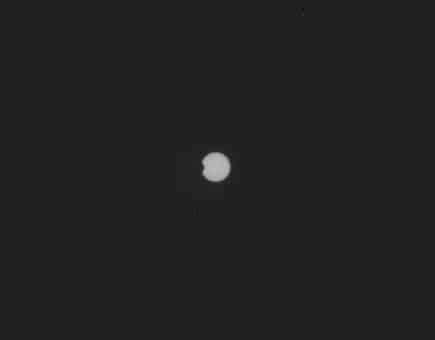As once can see above, Curiosity recently caught glimpse of a partial solar eclipse from the surface of Mars and wired back some eye candy for us Earthlings to rejoice. You might find the fact that there’s only a small black dot partially covering the sun a bit disappointing. Instead, maybe we should look at our moon in more appreciative light.
During partial or total solar eclipses, our moon which is 2,160 miles across, is big enough to block the sun when perfectly aligned, allowing for a marvelous spectacle. In the shot from above, the small black dot on the sun is Mars’ tiny moon Phobos which is a mere 14 miles across, albeit much closer to the surface of the red planet than our moon is to Earth. Mars’ other moon, Deimos, is even tinier. In fact, scientists believe both moons were once flyby asteroids which ended up captured into Mars’ orbit by its gravity.
The Curiosity rover is already six weeks into its mission, albeit its first month was stationary, time in which critical system checks were made to ensure everything is in order for the actual mission. Currently, the rover is on the move towards a site called Glenelg, where three different types of Martian terrain come together in one place. It’s a while a short stop, however, until it reaches its main destination – Mount Sharp, the 3.4-mile-high (5.5 km) mountain that rises from Gale’s center. In the meantime, Curiosity is sure to broadcast some more interesting facts from Mars. Stay tuned!










